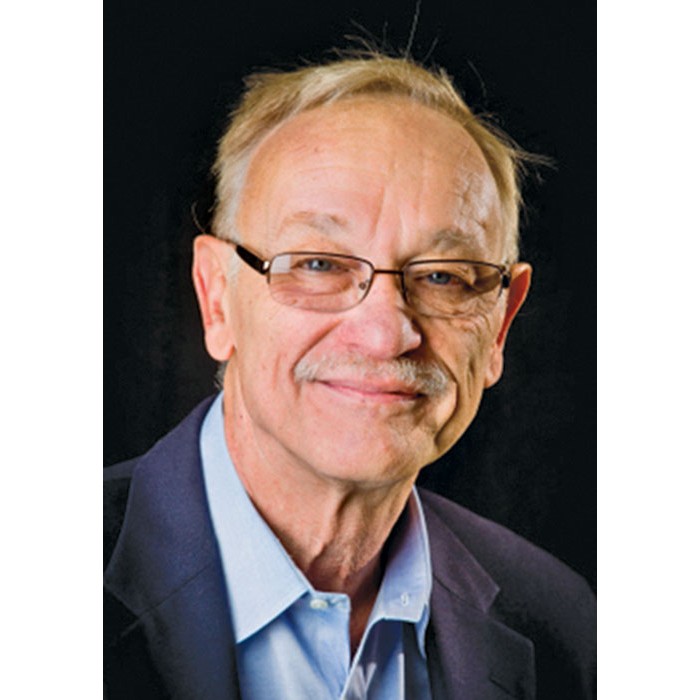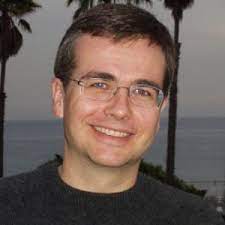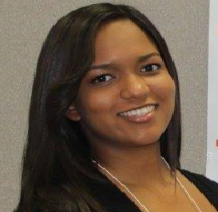Sessions & Tracks
Track 1: Crystallography
Crystallography is the study of crystals, which can originate in nature in variability of forms, from salt to snowflakes to jewels. Crystallographers use the qualities and internal arrangements of precious stones to regulate how iotas behave and provide knowledge that is used by scientists, physicists, and intellectuals. Connected Crystallography is a crystallographic method that uses neutrons, X-beams, and electrons to examine the crystalline and non-crystalline matter. Its applications include consolidated matter research, materials science, and the life sciences, as well as identifying stage deviations and auxiliary changes of imperfections, structure-property connections, interfaces, surfaces, and so on.
Track 2: Desalination and Water Purification
This method required the employment of a diverse range of materials, including copper-based (cupronickels), iron-based (stainless steels), and titanium-based materials. Together the multi-level flash (MSF) and multi-impact distillation (med) methods need an important amount of money and have large paths. The membrane technique, also recognized as opposite osmosis (RO), is a low-temperature, high-strain method for attaining equal endpoints. This is a separation technique used in the optimization and purification of potable and drinking waters at the same time. This approach can be modularized or built as a full-scale conversion factory.
Track 3: Advance in HPLC
High-performance liquid chromatography has stood on a rock hard foundation and has seen several innovations which have met the growing expectations in separation techniques. It has been used in an extremely wide range of analytical methods and it is impossible to give a comprehensive set of examples that would illustrate its wide applicability in a variety of matrices. Some desirable features through several innovations which have made a remarkable contribution to the popularity of the HPLC technique in laboratories across the globe, like, high separation efficiencies with lowest column back pressures, separations over wide temperature ranges etc.
Track 4: Novel Separation Techniques in Chemistry
In most Modern Pharmaceutical Techniques, chemicals, and other procedure plants, the separation process is an essential unit action. Among the separation procedures, there are several that are characteristic and customary, such as distillation, absorption, and adsorption. These procedures are rather shared, and the associated technologies have been well-developed and studied. Fresher separation methods, such as membrane-based approaches, supercritical fluid extraction, chromatographic separation, and others, are, on the other hand, gaining importance in modern-day plants as novel separation processes.
Track 5: Major Chromatographic Techniques
Chromatography basically is a method of separation of compounds from a mixture. The technique is both analytical and preparative and is employed widely in industries as well as in laboratories. Chemical analysis is mostly done all over the world with chromatography or any other various techniques related to chromatography. Chromatography is a physical technique and has a vast application in chemical field starting from basic analytical chemistry to forensic science.
Some major chromatography techniques are:
Column chromatography is a method used to purify individual chemical compounds from mixtures of compounds. It is has preparative applications on scales ranging from small scale to large scale production. Relatively low cost and disposability of the stationary phase are the main advantages of column chromatography.
Paper chromatography involves placing a small dot or line of sample solution onto a strip of polar cellulose chromatography paper. The paper is placed in a glass chamber with a shallow layer of solvent and is sealed. As the solvent moves through the paper, it comes in contact with the sample mixture, which starts to rise up the paper with the solvent.
Gas chromatography (GC) is commonly used in analytical chemistry for separating and analysing compounds that can be vaporized without decomposition. In this process, the mobile phase (or "moving phase") is a carrier gas; commonly an inert gas such as helium or an unreactive gas such as nitrogen is generally used. Stationary phase is a microscopic layer of liquid or polymer on an inert solid support, within a glass or metal tubing.
Track 6: Hyphenated separation techniques
The hyphenated technique is developed by blending a separation technique and an on-line spectroscopic detection technology. The significant improvements in hyphenated analytical methods over the last two decades have significantly broadened their applications in the analysis of biomaterials, especially natural products. This is useful for pre-isolation analyses of crude extracts or fractions from various natural sources, isolation and online detection of natural products, chemotaxonomic studies, chemical fingerprinting, quality control of herbal products, dereplication of natural products, and metabolomics.
Track 7: Advances in Chromatography and Mass Spectrometry
Chromatography and mass qualitative analysis are occupied for analysis of organic compounds. Electrospray ionization (ESI) could be a technique employed in the mass spectroscopic analysis. Recent advances in sample preparation techniques to beat difficulties encountered throughout measuring of little molecules from biofluids mistreatment LC-MS. Global bioanalysis seminars are conducted and those specifically applied for chromatography assays, ligand binding assays to know more advances.
Track 8: Separation techniques in chemical engineering
The chemical, petroleum refining, and materials handling industries all depend on separation processes, which utilize physical, chemical, or electrical forces to isolate or concentrate specified parts of a blend. The Separation Process within side chemical engineering consists of Adsorption, Capillary electrophoresis, Centrifugation, and cyclonic separation, Crystallization, Decantation, Distillation, Drying, Electrostatic Separation, Elutriation, Evaporation, Extraction, Field float Fractionation, Magnetic separation, Precipitation, Recrystallization.
Track 9: Biomagnetic separation techniques
Biomagnetic separation techniques have a wide range of applications in biosciences. The beads are uniform, mono-dispersed, paramagnetic, consisting of a nanometer-scale superparamagnetic iron oxide core encapsulated by a high purity silica shell. The silica is suitable for chromatography in order to purify target molecules. The technique is quick, simple and flexible for large and small samples overcoming the need to repeated centrifugation and pipetting. It is an exciting time for biomagnetic separation and a large number of specialties, companies, and patients that may benefit from it, from small production companies to large pharma and academic research institutions.
Track 10: Separation techniques in food chemistry
Separation Techniques is the most important unit operation in food processing. The first processes developed to separate food components selected physical or mechanical means that allowed simple separations involving solid–solid or solid-liquid systems. Another group of separation relied on heat-induced phase changes as the driving force for the separation. From simple evaporation to distillation and solvent extraction, such approaches allowed for the concentration of many liquid foods (i.e. milk, fruit and vegetable juices, etc.) and for as the industrial production of ethanol, liquor, and vegetable oils.
Track 11: Emerging Separation Technologies
In the important extents of physical sorption, distillation process, membranes, absorption, and heat exchange, there is rising global attention to step change Separation Technologies. Numerous new research events are interested in increased concerns about the environment (e.g. CO2 capture), apparatus, and energy costs. Ion-pair-reverse liquid chromatography, Multi-dimensional Separations in 3D-printed devices, Industrial membrane filtration technology, Magnetic Separation Techniques in various fields, Cell Departure Techniques in microbiology, super-critical fluid chromatography (SFC), Hydrophilic interaction chromatography (HILIC), Multidimensional GC separation are some of the new expertise included in this new technology.
Track 12: Spectroscopy as separation techniques
Spectroscopy deals with the production, measurement, and interpretation of spectra arising from the interaction of electromagnetic radiation with matter. There are many different spectroscopic methods available for solving a wide range of analytical problems. The methods differ with respect to the species to be analyzed (such as molecular or atomic spectroscopy), the type of radiation-matter interaction to be monitored (such as absorption, emission, or diffraction), and the region of the electromagnetic spectrum used in the analysis. Spectroscopic methods are very informative and widely used for both quantitative and qualitative analyses.
Track 13: Membrane Technology in Separation Techniques
Membrane technologies are gradually bringing useful mechanisms of pharmaceutical manufacturing processes to the surface. For an extended time, reverse osmosis, ultra-filtration, and micro-filtration membrane separation technologies have been used to concentrate and purify both tiny and big molecules. Recent technical applications encompass a wide spectrum of departure, concentration, and purification requirements. Pharmaceutical waste streams, for example, can be processed with Nano-filtration or evaporation to purify them and/or reduce the amount of trash that needs to be incinerated.
Track 14: Separation Techniques used in Geology / Mineralogy
Mineral ores are one of the most fundamental raw resources that must be cleaned and divided into their mineral forms. The particle sizes, physical qualities, and chemical properties of mineral ore can all be used to separate them. Chemical treatments are used to make separations, which are then subjected to quality control in each sector to achieve an economic grade by removing all other contaminants.
-
Evolution of the theory of Plate tectonics
-
Plate tectonics
-
Intrusive igneous rocks
-
Volcanoes and volcanic rocks
-
Chemical composition of the earth's crust
Track 15: Bioseparation techniques
Bioseparation is the name given to the practice of purifying biological products on large-scale, using fundamental aspects of engineering and scientific principles. The end goal of bioseparation is to refine molecules, cells, and parts of cells into purified fractions. Biological products can be separated and purified depending upon the following characteristics: density, diffusivity, electrostatic charge, polarity, shape, size, solubility, and volatility.
Track 16: Separation techniques in pharmaceutical chenistry
The development of the pharmaceuticals brought a revolution in human health. These pharmaceuticals would serve their intent only if they are free from impurities and are administered in an appropriate amount. To make drugs serve their purpose various chemical and instrumental methods were developed at regular intervals which are involved in the estimation of drugs. These pharmaceuticals may develop impurities at various stages of their development, transportation, and storage which makes the pharmaceutical risky to be administered thus they must be detected and quantitated. For this analytical instrumentation and methods play an important role..
Track 17: New analytical Instrumentation and Equipment
The separation of complex and natural samples is done using NMR analysis. Recent advances in the mass chemical analysis have allowed the analysis of endogenous metabolites to be improved. Many subjects related to emerging High-Performance Liquid Chromatography, electrospray ionization, and mass chemical analysis methods for targeted metabolomics are discussed here (i.e., menstruation of dozens to many specific metabolites). Lab-on-a-chip devices are a collection of MEMS instruments that are occasionally referred to as "Micro Total Analysis Systems" (TAS).
-
Raman spectroscopy
-
Sample Pre-treatment
-
Elemental analyzer
-
Semiconductor laser
Track 18: Analytical chemistry
Analytical chemistry is a branch of chemistry that deals with the separation, identification, and quantification of chemical compounds. Chemical analyses can be qualitative, as in the identification of the chemical components in a sample, or quantitative, as in the determination of the amount of a certain component in the sample. Analytical chemistry is also focused on improvements in experimental design, chemometrics, and the creation of new measurement tools. Analytical chemistry has broad applications to forensics, medicine, science, and engineering.
Track 19: Analytical Techniques in Immuno Chemistry
Regression Analysis, Grouping Methods, and Multiple Equation Replicas are instances of analytical approaches that allow scientists to study complex associations between variables. The chemistry that concentrations on the molecular mechanisms that reinforce a system's performance, including the possessions of antibodies, antigens, and their interactions. Diagnostic assay, endoscopy, diagnostic imaging, blood tests, and immunochemical assay are the most predominant diagnostic methods.
Participation / presentation option
Oral presentation: Oral Presentations may include topics from research, theoretical, professional, or private practices concisely. Individuals with personal experience are also welcome to present personal experiences or narratives which help others in everyday life. Speakers with a 30-minute slot should plan to speak for 20-25 minutes, and Keynote speakers should plan to speak for 40-45 minutes, with the remaining time to be used for questions and discussion by the Session Chair.
Workshop: For workshop presenters also, the topic of the talk will be the same as an Oral presentation with more specialized techniques and detailed demonstration. The generalized time duration for a workshop presentation is about 45-50 minutes. Interested participants can join their respective teams and present the workshop with their research coordinators with special group waivers on registration.
Poster presentation: Student Poster Competition will be organized at the Euro Separation Techniques 2023 to encourage students and recent graduates to present their original research. Presenters will be given about 5-7 minutes to present the poster including questions and answers. Judges may ask questions during the evaluation of the presentation. This is an opportunity for young scientists to learn about the recent findings of their peers to increase their capacity as multidisciplinary researchers. Poster displays will be in hard copy format of 1x1 M long.
For more details regarding Poster Presentation and Judging Criteria view Poster Presentation Guidelines.
Webinar: The webinar presentation is designed for those interested attendees who cannot join in person due to schedule conflicts or other obligations. In this option, the presenter may record the presentation and their presentation will be presented in the Webinar presentation session.
E-Poster: E-Poster is also similar to the webinar presentation. In this session, their presentation will be published in the form of a poster on the conference website and the presenter's abstract will be published in the conference souvenir and journal with DOI.
Exhibition: Euro Separation Techniques 2023 has the opportunity to exhibit the products and services from commercial and non-commercial organizations like Drug manufacturers, Clinical Trial Sites, Management Consultants, Chemists, Pharmacists, Business delegates, and Equipment Manufacturers.
Advertisement: The conference program is a valuable resource that all attendees refer to again and again as they navigate the conference. Advertising in the conference program is a great way to market and can help you secure long-term business.











